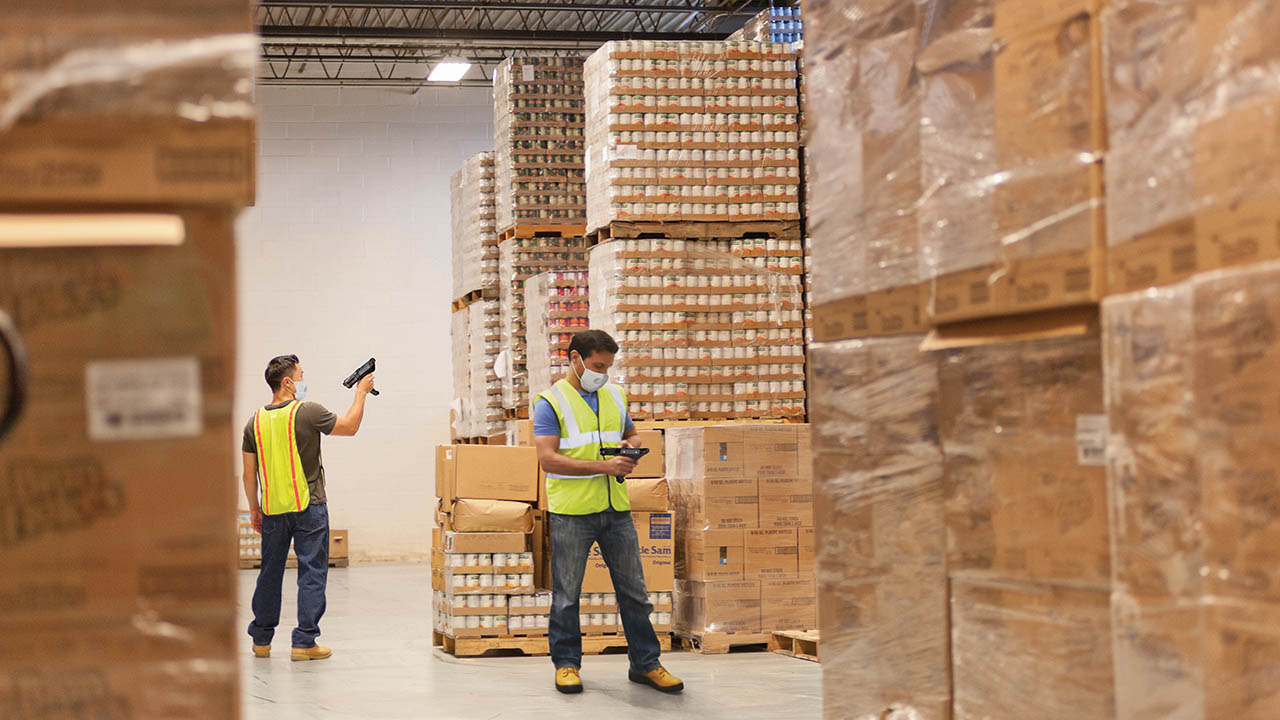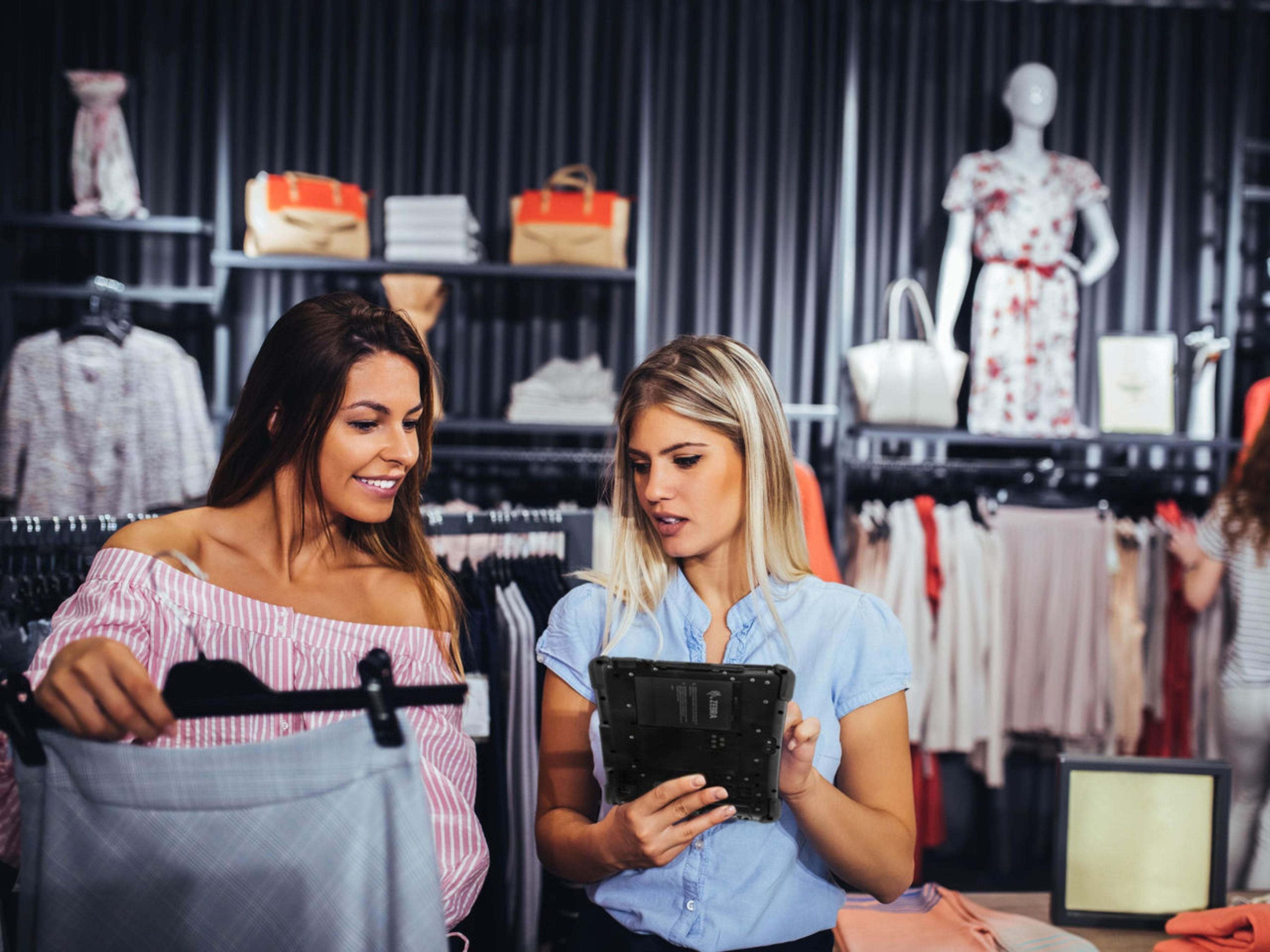
Are Your Workers Getting Too Close to One Another? This New Mobility Solution Will Alert Them to Step Back (and Help You Take Action When Needed)
Social distancing is a core tenant of safe workplaces in the age of COVID-19. However, it’s not always easy for workers to stay 6 feet (2 meters) away from one another all day long. This is particularly true in manufacturing plants, warehouses, distribution centers and other highly-trafficked facilities in which workers are navigating miles of tight aisles, dense postponement work stations, blind corners and busy loading docks. As a result, many workers may opt to call out to avoid what they feel are unsafe situations, and those who do report in might find themselves more distracted than usual. That’s precisely why companies are doing everything they can right now to identify and mitigate all potential “close contact” scenarios that could facilitate the spread of COVID-19 and ensure employees feel safe coming into work…Zebra included.
As an essential business, we have been challenged with increasing the physical distancing of our warehouse and repair depot workers around the world without disrupting productivity. We have also been charged with managing workforce notifications of positive COVID-19 cases reported by employees while maintaining privacy. We understand how hard it can be to maintain operational continuity without compromising worker safety. Over all of that, we’re looking at all possible ways to keep our workforce safe and healthy at the same time that we’re asking them to show up each day.
We also know that we can’t keep our workforce at 25 or 50% capacity forever, either. At the same time, there is a significant cost and resource burden associated with manual contact tracing as well as shutting down entire facilities due to the inability to identify and contain potential exposures. We – along with our partners and customers – must find a way to make it easier for workers to maintain social distancing and peak efficiency.
That’s why a team of Zebra engineers and supply chain operations leaders from around the world went to work in late March to adapt software from our existing real-time location system (RTLS) portfolio into a seemingly simple mobile device application that could effectively and accurately monitor the distance and time spent between employees during the course of the day. More specifically, we wanted to create a solution that can:
1. Warn employees when they get too close to one another so that they can safely separate.
2. Give us a way to monitor high-risk proximity events, which are instances in which employees remain within 6 feet/2 meters of one another for an extended period. We call these proximity events.
3. Securely record proximity events for later reference if needed for targeted and automated contact tracing.
Oh, and we wanted (or should I say, needed) to do all of this without violating employee’s privacy rights or requiring anyone to be on-site to help install the solution.
Needless to say, turning this idea into a market-ready solution in mere weeks was not easy! But we did it!
With a little bit of ingenuity and a lot of long hours working through weekends and holidays, this team drove a lightning-fast development sprint for what was aptly named the Zebra MotionWorks® Proximity solution. In less than four weeks, it evolved from a vision to a viable worker distancing and contact tracing tool that was ready for real-world use.
(It did help that we have extensive expertise developing and deploying solutions that use Bluetooth® Low Energy technology. Gartner recently named Zebra Technologies a Leader in the *2020 Magic Quadrant for Indoor Location Services, Global. We have also been recognized as a Visionary for each of the two prior years. You can download a complimentary copy of the latest full Gartner report here until December 31, 2020.)
How the Zebra4Zebra Program Helped Prove the Viability of Our Vision for a Proximity Sensing, Alerting and Contact Tracing Solution
In times of extreme uncertainty, it is imperative that technology innovators be certain about the efficacy of new solutions they bring to market. The last thing anyone wants is to further disrupt workers or introduce new safety, privacy or security risks for the sake of convenience or efficiency. That is why Zebra decided to put the MotionWorks Proximity concept to the test in the real world in our own warehouses and repair depots before bringing it to the mass market.
Learn More:
We solicited and scoured through daily rounds of feedback from our front-line employees to understand how various wearable configurations for mobile computing hardware and facility environments impacted the software application’s ability to effectively detect and alert employees when they are in close (and unsafe) proximity to one another. We also ran countless simulations of a variety of social distancing and approach conditions to ensure the solution would be effective without being disruptive.
We also verified the accuracy of reported proximity events in our dashboards with employees to ensure the accuracy of the solution’s distance and time monitoring algorithm so that we (and other companies down the road) could quickly identify employees’ history of high-risk contacts with others in the building to facilitate more targeted notifications of confirmed COVID-19 case exposures.
After additional testing and refinement, we were confident that MotionWorks Proximity – originally intended for in-house use – could significantly benefit companies of all sizes and in all industries as they prepare to re-open and/or rebuild. On June 4, 2020, we were ready to roll it out to the world (and you).
How You Can Leverage MotionWorks Proximity Right Now to Help Protect Your Employees’ Health
All you need to improve workers’ awareness of their proximity to others and to improve your awareness of high-risk proximity events are three things:
1. A reliable Wi-Fi signal
2. One or more of these compatible Zebra enterprise-grade Android™ devices
3. The MotionWorks Proximity software application
That’s it. Since MotionWorks Proximity can be remotely loaded onto devices, customers (who already have a fleet of compatible Zebra devices deployed) can be operational as soon as the application is pushed out to workers. No one from Zebra has to be on site to install this solution. Companies that need to order new – or more – Zebra mobile computers to ensure every worker has a compatible device can be up and running in a matter of minutes once the pre-configured devices are distributed by your own IT or management team to workers.
Once the devices are online, there are only two more steps that must be taken to start reaping the benefits:
1. Workers must login to the app on their assigned device at the beginning of each shift using a completely anonymized user ID or employee ID.
2. You and your management team simply and securely login to any web-enabled device as needed for 24/7, live access to proximity and contact tracing insights, dashboards and reports.
As soon as a worker logs into the MotionWorks Proximity app, it will immediately:
1. Start sensing proximity events. The devices used in the MotionWorks Proximity solution are equipped with Bluetooth Low Energy beacons that “listen” for beacons transmitting from other workers’ devices, so they can tell when workers are within 6 feet/2 meters of one another for an extended time.
2. Send audible proximity alerts to workers. When the mobile devices’ BLE beacons detect other devices’ BLE beacons transmitting from within the 6-foot social distancing perimeter, the app’s unique algorithm will initiate a 60-second wait period to see if the “beacons” (i.e. workers) are just passing by. There is no need to issue an alert for brief encounters. However, if the same beacons are still detected after that wait period is over, then the app will emit a sound warning to all impacted workers that they are too close to one another and need to immediately increase their physical distance. Proximity alerts will then be issued every minute thereafter until workers separate to a safe distance.
3. Report high-risk proximity events to the cloud for supervisor review and action. If workers ignore the warning alerts and remain in close proximity to others for an extended period, then the app will immediately report the interaction as a “proximity event” via the live cloud-based dashboard and add it to the historical event record. (Proximity alerts are not reported and recorded as long as employees self-correct before the third notification.) The live dashboard enables supervisors to immediately investigate the circumstances that led to each proximity event and make adjustments to workflows to help reduce or eliminate proximity events moving forward.
4. Streamline contact tracing reporting to a targeted list of confirmed exposures. Should an employee test positive for COVID-19, you can immediately login to the web-accessible contact tracing report for records specific to that employee using their unique ID number. This enables you to immediately identify and notify only the specific employees who were involved in high-risk proximity events about the potential exposure to initiate isolation, testing and treatment protocols while remaining compliant with privacy regulations.
5. Prompt users to thoroughly disinfect their devices at requested intervals throughout the day and at the end of each shift. This helps you to increase compliance with workplace sanitation measures designed to prevent the spread of COVID-19 via the handling of shared devices among shift workers.
How MotionWorks Proximity (Also) Protects Workers’ Privacy
We appreciate that privacy rights are a big point of contention when it comes to contact tracing applications. That is why we designed the MotionWorks Proximity solution to strictly maintain workers’ privacy during data collection and storage.
Unlike many public contact tracing solutions, MotionWorks Proximity gives businesses the ability to associate employee identities with employee IDs or other unique identifiers for app login, device linking and contact monitoring purposes. This anonymizes all proximity event data collected and made visible in the Zebra-hosted cloud application. We do not store personal or medical information. Should contact tracing need to be initiated, only those in your organization with permission to access employees’ personal information will be able to correlate the unique ID numbers with names.
Furthermore, contact time and distance monitoring stops the second that workers complete their shifts, log out of the MotionWorks Proximity app and turn in their devices for recharging. In addition, the app cannot be downloaded to consumer/personal devices. It is exclusively offered on secure enterprise-grade Zebra mobile devices that are purchased and owned by organizations and given to workers for business use only – and only while on the clock. As such, you can rest assured that your proximity monitoring and contact tracing efforts are compliant with industry and government privacy regulations.
However, since the solution is not active when workers are off the clock, it is recommended that you implement measures to help maintain social distancing at device recharging stations, breakrooms, building access points and other locations where proximity events could go undetected during shift changes.
Ready to Roll Out MotionWorks Proximity in Your Facilities?
Contact the Zebra team to learn more about how MotionWorks Proximity can help you increase workforce social distancing compliance and implement more targeted contact tracing with minimal time and resource investment.
###
*Gartner, Magic Quadrant for Indoor Location Services, Global, 13 January 2020, Tim Zimmerman, Annette Zimmermann
Gartner does not endorse any vendor, product or service depicted in its research publications, and does not advise technology users to select only those vendors with the highest ratings or other designation. Gartner research publications consist of the opinions of Gartner’s research organization and should not be construed as statements of fact. Gartner disclaims all warranties, expressed or implied, with respect to this research, including any warranties of merchantability or fitness for a particular purpose.
###




